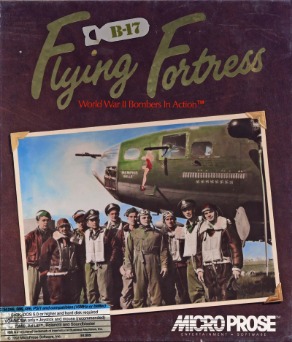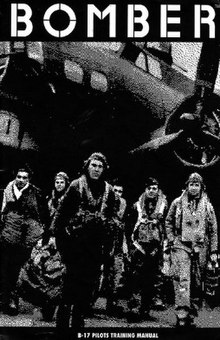
SimCity is a city-building simulation video game developed by Will Wright, and released for several platforms from 1989 to 1991. SimCity features two-dimensional graphics and an overhead perspective. The game's objective is to create a city, develop residential and industrial areas, build infrastructure, and collect taxes for further city development. Importance is placed on increasing the population's standard of living, maintaining a balance between the different sectors, and monitoring the region's environmental situations to prevent the settlement from declining and going bankrupt.

The Fool's Errand is a 1987 computer game by Cliff Johnson. It is a meta-puzzle game with storytelling, visual puzzles, and a cryptic treasure map. It is the tale of a wandering Fool who seeks his fortune in the Land of Tarot and braves the enchantments of the High Priestess. A sequel titled The Fool and His Money was released October 25, 2012.

Sid Meier's Pirates! is a video game created by Sid Meier for the Commodore 64 and published by MicroProse in May 1987. It was the first game to include the name "Sid Meier" in its title as an effort by MicroProse to attract fans of Meier's earlier games, most of which were combat vehicle simulation video games. The game is a simulation of the life of a pirate, a privateer, or a pirate hunter in the 16th, 17th and 18th centuries. It was widely ported to other systems.

Red Baron is a combat flight simulation video game for MS-DOS created by Damon Slye at Dynamix. It was published by Sierra On-Line in 1990. The game was ported for Amiga and Macintosh computers in 1992.

Star Wars is a first-person rail shooter designed by Mike Hally and released as an arcade video game in 1983 by Atari, Inc. It uses 3D color vector graphics to simulate the assault on the Death Star from the 1977 film Star Wars. There are three connected gameplay sequences: combat against TIE fighters in space, flying across the surface of the Death Star, and the final trench run. The sequence repeats with added complications and the Death Star regenerating for each. The player's X-Wing fighter has a shield which only protects against damage a certain number of times, then the next hit ends the game. Speech synthesis emulates actors from the film.

Cosmic Osmo and the Worlds Beyond the Mackerel is a graphic adventure computer game for the Macintosh computer line created by Cyan, Inc. It was published in 1989 and won the 1990 Mac User's Editors' Choice Award for the "Best Recreational Program" category.

The Manhole is an adventure video game in which the player opens a manhole and reveals a gigantic beanstalk, leading to fantastic worlds.

Dark Castle is a 1986 platform game for Macintosh that was originally published by Silicon Beach Software. The original game was designed and animated by Mark Pierce and programmed by Jonathan Gay with Real Sound by Eric Zocher. In Dark Castle, a young hero named Duncan tries to make his way to the evil Black Knight, dodging objects as well as solving occasional puzzles.

The Faery Tale Adventure is a 1987 action role-playing video game designed by David Joiner and published by MicroIllusions for the Amiga, and later ported to the Commodore 64, MS-DOS, and Sega Genesis. The MS-DOS version is titled The Faery Tale Adventure: Book I. Microillusions also released a "Book 1" version for the Amiga which was going to be the start of a series of games, according to Talin, but bankruptcy prevented it. The initial version was produced for the Amiga 1000 and featured the largest game world to that date. A sequel, Faery Tale Adventure II: Halls of the Dead, was released in 1997.

Tass Times in Tonetown is an adventure game published by Activision in 1986. It was designed by Michael Berlyn and Muffy McClung Berlyn and programmed by Rebecca Heineman of Interplay in cooperation with Brainwave Creations.

World Builder is a game creation system for point-and-click text-and-graphics adventure games. It was released for Macintosh in 1986 by Silicon Beach Software and had already been used for creating Enchanted Scepters in 1984. On August 7, 1995, developer William C. Appleton released World Builder as freeware.

Pax Imperia is a 4X game for the Apple Macintosh, released in 1992. The game won praise for its complex gameplay, real-time mode and ability for up to 16 players to join a single game using AppleTalk.

B-17 Flying Fortress: World War II Bombers in Action is a combat flight simulation video game developed by Vektor Grafix and published by MicroProse for the PC MS-DOS in 1992 and for the Amiga and Atari ST in 1993. The game simulates training, combat missions and sorties in a tour of duty in the Eighth Air Force of the United States Army Air Forces in the European Theater of Operations aboard a Boeing B-17 Flying Fortress heavy bomber during World War II. It was followed by B-17 Flying Fortress: The Mighty 8th in 2000.

Ishido: The Way of Stones is a puzzle video game released in 1990 by Accolade and developed by Publishing International. It was designed by Michael Feinberg and programmed by Ian Gilman and Michael Sandige. The game's producer was Brad Fregger, and Brodie Lockard contributed with graphics.

Welltris is a puzzle video game, developed by Doca and licensed to Bullet-Proof Software. It is an official game in the Tetris series. Adaptations were made by Sphere, Inc., for Spectrum HoloByte, and by Infogrames. It was released for MS-DOS compatible operating systems in 1989. Ports for Macintosh, Amiga, Amstrad CPC, and Atari ST followed 1990, then ZX Spectrum and Commodore 64 1991.

Challenge of the Five Realms: Spellbound in the World of Nhagardia is a role-playing video game created by MicroProse for MS-DOS and published in 1992.

The Computer Edition of Scrabble, also known as Computer Scrabble is a computer version of the board game Scrabble, licensed from J. W. Spear & Sons and released by Little Genius for the Apple II in 1982. It was subsequently released for most home computers of the time.

Swamp Gas Visits the United States of America is a computer game developed by Inline Design in 1990 for the Macintosh and Windows 3.1x. A sequel - Swamp Gas Visits Europe - was released in 1992.

M4 is a computer game developed by Deadly Games in 1992 for the Macintosh and in 1996 for Windows 3.x.

The Surgeon is a computer game published in 1985 by Information Systems for Medicine (ISM) for Amiga and Macintosh. The game has two sequels, The Surgeon II and The Surgeon III. In this game, the player is a surgeon. Dr. Myo Thant, The Surgeon's designer, would later go on to design Life & Death, a surgical game with similar elements, albeit with a wider release.




















